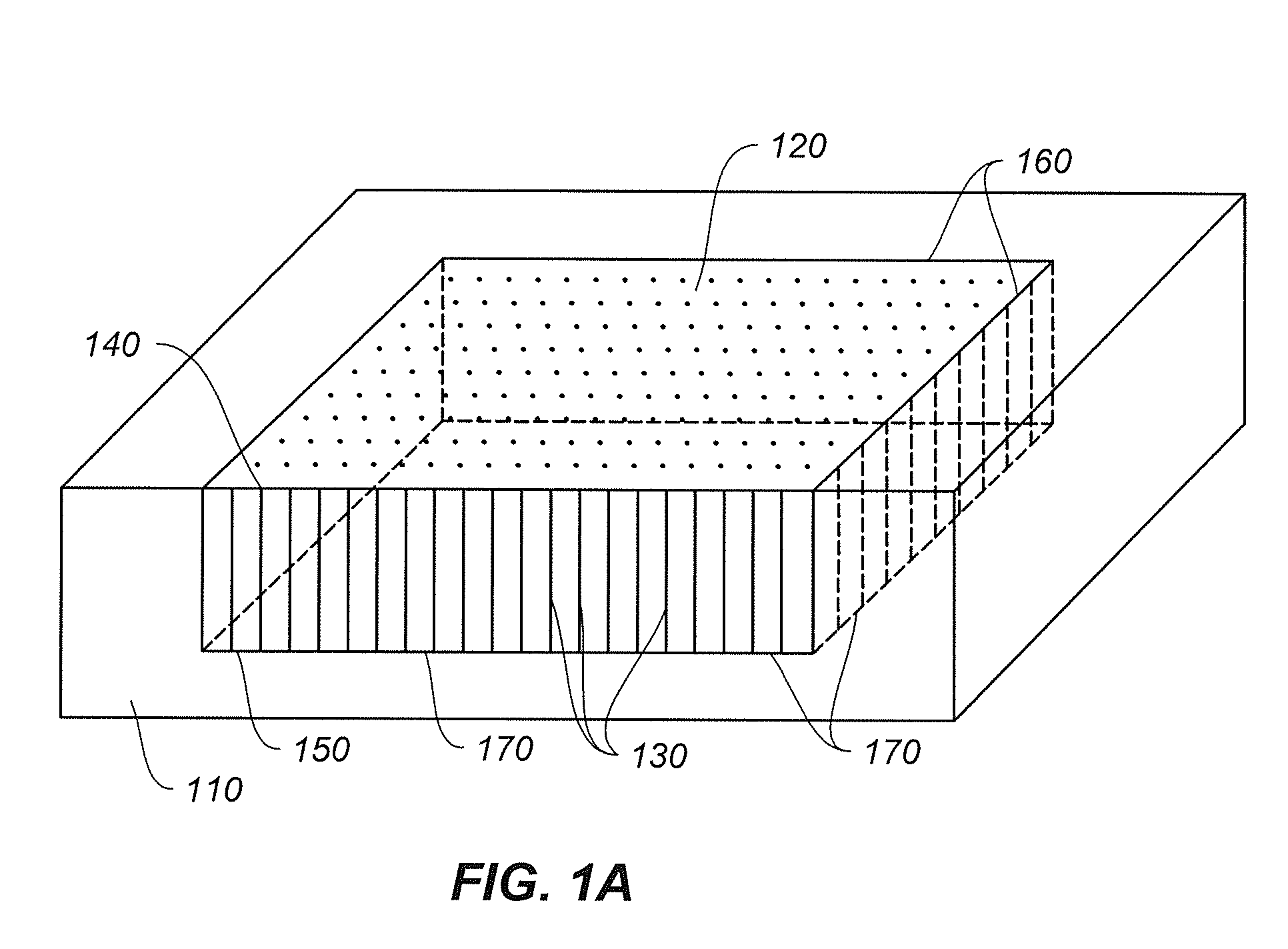Arrays of long nanostructures in semiconductor materials and methods thereof
a nanostructure and semiconductor technology, applied in the field of nanostructures, can solve the problems of limited commercial application of thermoelectrics, poor cost performance of these devices, and the limited range of thermoelectrics, and achieve the effect of reducing the cost of thermoelectrics
- Summary
- Abstract
- Description
- Claims
- Application Information
AI Technical Summary
Benefits of technology
Problems solved by technology
Method used
Image
Examples
Embodiment Construction
[0036]The present invention is directed to nanostructures. More particularly, the invention provides arrays of long nanostructures in semiconductor substrates and methods thereof. Merely by way of example, the invention has been applied to arrays of long nanowires in silicon with certain thermoelectric properties. However, it would be recognized that the invention has a much broader range of applicability, including but not limited to use in solar power, battery electrodes and / or energy storage, catalysis, and / or light emitting diodes.
[0037]In general, the usefulness of a thermoelectric material depends upon the physical geometry of the material. For example, the larger the surface area of the thermoelectric material that is presented on the hot and cold sides of a thermoelectric device, the greater the ability of the thermoelectric device to support heat and / or energy transfer through an increase in power density. In another example, a suitable minimum distance (i.e., the length of...
PUM
| Property | Measurement | Unit |
|---|---|---|
| Length | aaaaa | aaaaa |
| Area | aaaaa | aaaaa |
| Area | aaaaa | aaaaa |
Abstract
Description
Claims
Application Information
 Login to View More
Login to View More - R&D
- Intellectual Property
- Life Sciences
- Materials
- Tech Scout
- Unparalleled Data Quality
- Higher Quality Content
- 60% Fewer Hallucinations
Browse by: Latest US Patents, China's latest patents, Technical Efficacy Thesaurus, Application Domain, Technology Topic, Popular Technical Reports.
© 2025 PatSnap. All rights reserved.Legal|Privacy policy|Modern Slavery Act Transparency Statement|Sitemap|About US| Contact US: help@patsnap.com



